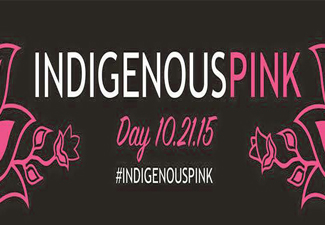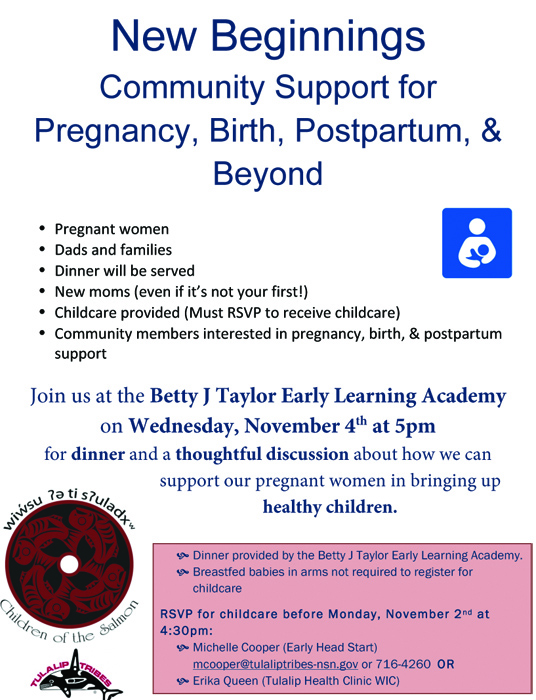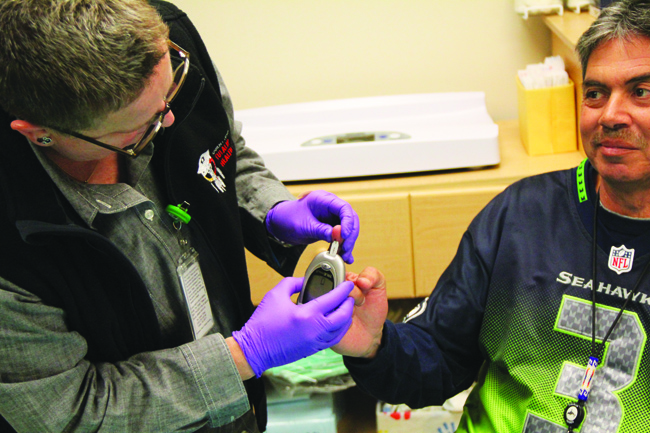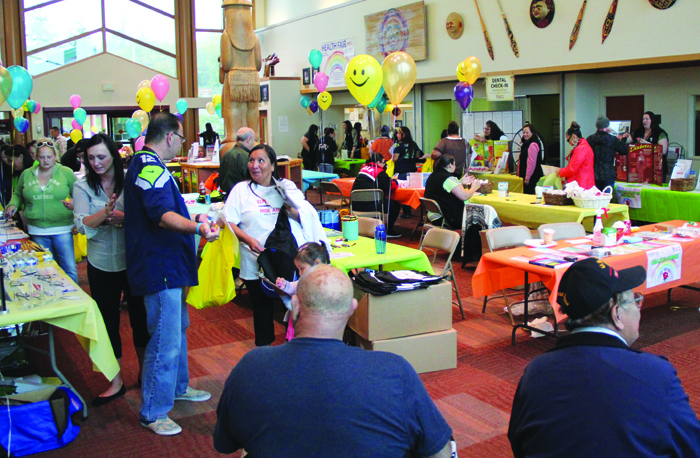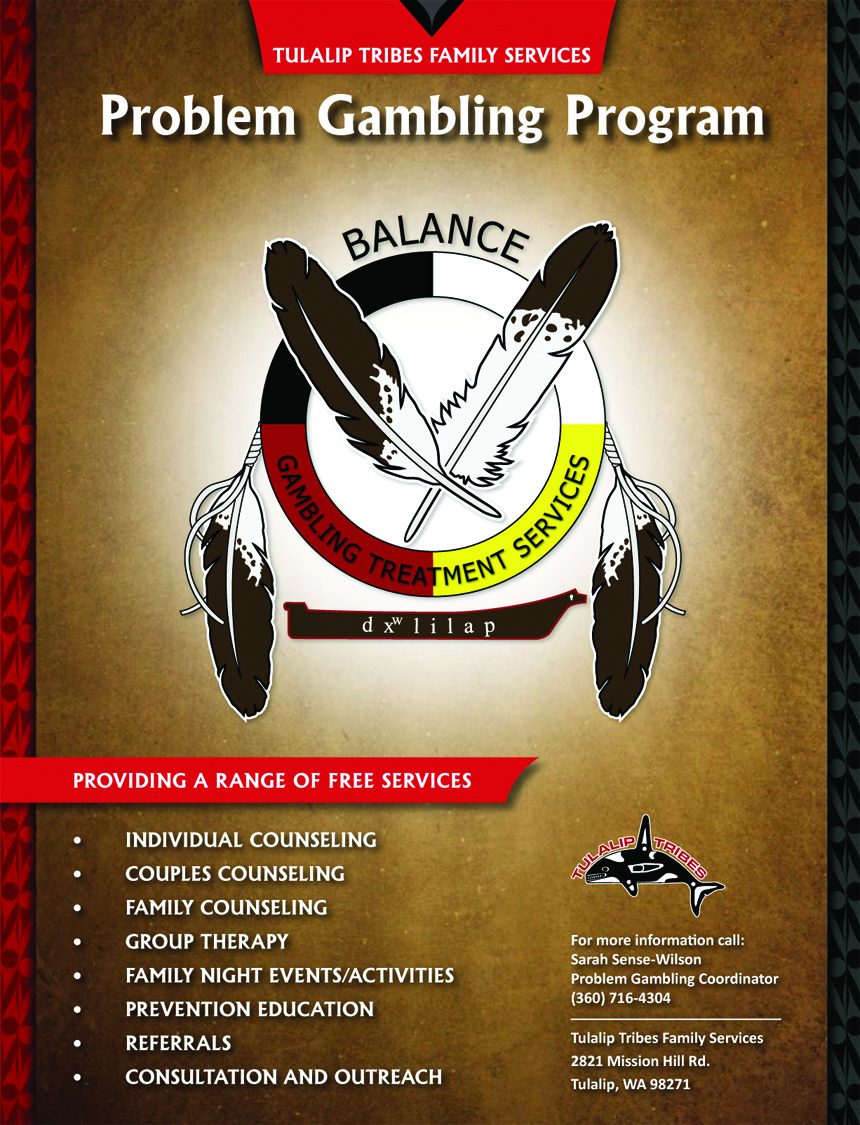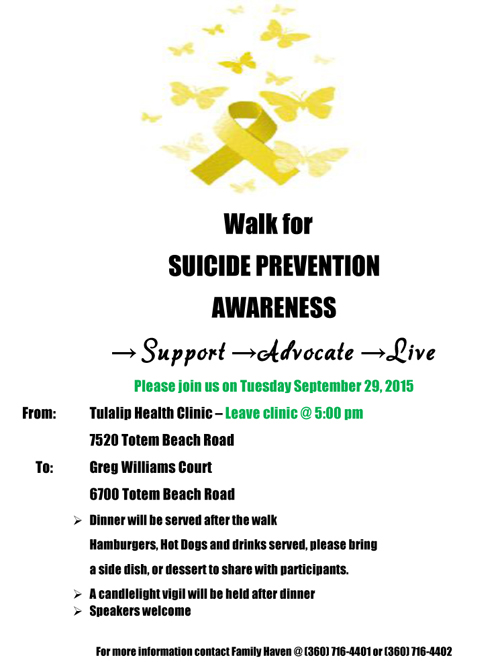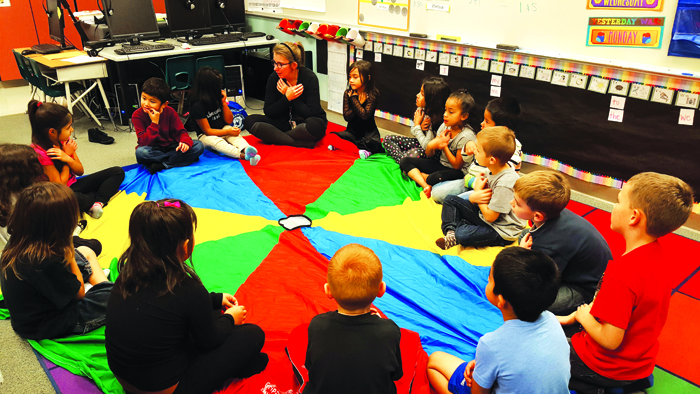
By Niki Cleary, Tulalip News
Have you ever been rolled by a wave? First, it hits you. Sometimes it hurts, sometimes it’s just a shock, but then you’re tumbling. Completely disoriented, you have no idea which way is up, or how to get out. You can’t stay where you are, you know that. Your lungs start burning. You can hear your heart pounding in your ears. Then there’s that magic moment when you find your equilibrium. You find the surface, and take that first sweet breath of air.
Last October the MPHS school shooting was a wave that rolled us all. The problem with waves is they never come alone. Over the course of the year, waves have broken over us repeatedly. Some were small, like the time some guy cut in front of you in the line at the coffee shop. Some are very personal, the time a loved one lied to you or told you they hated you. Some are huge and might include domestic violence, or a death in the family. Some happened within our families and some, like the automobile accident that killed four young people in August, happened to our entire community.
Every wave has hit each of us differently. Some of us were carried closer to shore and we’re almost walking on the beach normally again. Some of us were brought a step closer to drowning every time. Some of us found a life raft in the arms of our families, and some found it in addiction or dysfunction. A few of us have kept ourselves afloat by climbing onto someone else, and now we’re panicking as we watch them slip below the surface.
These are just the latest series of waves to wash over our community. One of Tulalip’s original tidal waves of trauma, the boarding school, scarred our community. It left a type of Post-Traumatic Stress Syndrome that was passed from generation to generation. That legacy made it more difficult for our people to cope with stressors, and when our community was rocked by the shooting, many of us were already at our limits.
What does trauma look like?
“Our people are hurting so bad,” said Sherry Guzman, Tulalip’s Senior Manager of Behavioral Health. “So many of our people have had so much trauma and it’s still going on. A lot of people don’t think of it as trauma. Maybe their father left or didn’t protect them, or mom or dad drank too much or mom had many boyfriends.
“Then they get older and fall in love with this person that said they loved them. Then there’s a baby and that person leaves. Then because they’ve never been taught to take care of a child, that child, who they do love, is taken. That is trauma, upon trauma, upon trauma. Trauma can be a boyfriend slapping you or making fun of you. One of the greatest traumas in our community is lateral violence, wanting to hurt someone else because it makes you feel bigger or better.”
Gina Skinner from the Tulalip’s Chemical Dependency Clinical Administrator pointed out a history of trauma in the clients that seek healing from addiction. The last year, she explained, has been particularly difficult.
“There is a lot of emotion in every session,” Gina described. “There was a core group of kids checking in. Nobody quite knows what to do with these wounded children. We get referrals from the school or summer youth program. But once they get a UA (urinalysis test), they were like, ‘Oh well, I don’t want the job,’ or, ‘I don’t want to go back to school.’ From my perspective we need to figure out how to get them engaged into services gently with us or child services.
“It’s almost easier to get them into my department [chemical dependency] because someone would rather be an addict than have mental health issues. Addiction is something you can recover from and mental health has this permanency stigma.”
Gina urged both children and adults to reach out, “Every feeling is valuable, no matter if you think it’s too little. If you don’t feel right or need to talk, if you don’t feel safe, tell someone. There is help here, come in, this is a safe place for you.”
The unthinkable
Like 9/11, or those who lived through Pearl Harbor, the people affected can instantly recall where they were and what they went through when they heard about the shooting.
“I felt like I couldn’t breathe,” reminisced Tulalip’s Child Advocacy Coordinator Leila Goldsmith. “I know that’s an anxiety attack.”
Now, like many community members, Leila doesn’t quite feel like she’s entitled to feel traumatized.
“No matter how bad it feels to me, it’s hard to give voice to it, because I didn’t have the worst thing happen. None of us feel like we’re allowed to feel, because someone had something worse happen, someone else lost a child. I know we need to acknowledge that even if you were on the periphery, it was devastating. What happened was unthinkable, and then it happened. Even if you are on the edges of it, it changes your world.
“For a while it was quieter. Things kind of came to a standstill. We didn’t have as much activity, I think, because everybody was just consumed with living.”
Leila runs the Child Advocacy Center, a program dedicated to helping heal victims of child abuse.
“Initially I was asked to help find resources to guide us through those first months,” Leila explained. At that time she reached out to colleagues on a national level to find professionals able to both provide the level of service needed in the aftermath, and provide it in a way that supports Tulalip culture, rather than trying to work around it.
“Lots of people want to come help you, but there aren’t very many people you want to have around,” Leila explained. “The phrase that rang in my mind is, this is the guy you want around after everyone else leaves.”
The ‘guy,’ was actually a team: the International Trauma Center, led by Dr. Robert Macy.
“He was incredible compassionate and gentle. I felt, if he came, he’d be here to help and not further his own interests. He agreed to a trip to meet and talk with us to see if we were the right fit. When Dr. Macy first came, that was the first time someone sat down with us and said there is a predictable set of stages that the community will go through. It was so comforting for someone to say, ‘I’ve seen this over and over and this is what you can expect.’ Because when you’re experiencing it, it feels like your brain is exploding, you can’t even think in a straight line. ”
Leila explained that, while it’s been a year, that guidance is still needed.
“We have some of the highest numbers we’ve ever had,” she said. “We know stressors in families mean more child abuse and less resilience. This has taken a toll on every single person, our reserves and our ability to cope.”
Her hope is that the community will continue to focus on healing and children.
“There is a safety net of professionals here who have a multitude of resources and are genuinely doing their work with heart. Sometimes, I feel like people give up on the truth, that healing is possible. Healing doesn’t come through the criminal justice system, it comes other ways. We’re working to offer more so that people can have that opportunity to walk towards healing. We have a long ways to go.
“If I could change one thing to make us healthier,” she continued. “I’d say choose children over adults, every day. Protect children before you protect adults. If people did that alone, everything would change.”
Healing takes a village
The International Trauma Center describes traumatic experiences as “dehumanizing, shocking or terrifying, singular or multiple compounding events over time and often include betrayal of a trusted person or institution and a loss of safety. Trauma can result from experiences of violence. Trauma includes physical, sexual and institutional abuse, neglect, intergenerational trauma, and disasters that induce powerlessness, fear, recurrent hopelessness, and a constant state of alert. Trauma impacts one’s spirituality and relationships with self, others, communities and environment, often resulting in recurring feelings of shame, guilt, rage, isolation and disconnection.”
The bright light in all this is that people can heal from trauma. A trauma or even multiple traumas doesn’t doom a person to a life of addiction, health issues and intergenerational violence. Which is why Tulalip has instituted a Trauma Informed Care model of services.
Tulalip Recovery Manager, Rochelle Lubbers described the model, “Trauma Informed Care (TIC) is a powerful way to help our tribal members manage and sustain important relationships in our personal and work lives by engaging in compassion, vision, social justice while at the same time decreasing the use of violence and aggression to negotiate those relationships.
“There are many ways Trauma Informed Care will be implemented throughout our community,” she continued. “One piece will be to educate the community and workforce about the impact of psychological trauma. Through the identification, assessment and treatment of trauma in individuals, families and community members we can significantly decrease the long term negative effects of violence exposure among our tribal members.”
The goal, she explained, is to create resiliency to all trauma, not just cope with the aftermath of the MPHS shooting. “We know we will continue to experience trauma in years to come and the Trauma Informed Approach gives us long-term effective tools to reduce violence in our community and to engage in consistent resilient behaviors for our children, partners and elders.”
Tulalip is not alone in this effort, Rochelle pointed out.
“’Unity’ was not only a message developed after Tulalip and Marysville experienced community violence, but it was an effort between all respective parties to communicate and heal together. Last November a recovery committee was formed and was very inclusive to the greater community; it includes the Tribe, City of Marysville and the School District as well as partnering agencies such as Victim Support Services and Volunteers of America Crisis Care in addition to many faith based communities and non-profit agencies.
“This group has produced many tangible community resources and events such as an inter-faith service, a multi-disciplinary trauma response team, a series of evidence based suicide prevention programs, an integrated community based resource website, multiple trauma informed care trainings and credentialing seminars, and, at the one year marker, a ‘Walk of Strength’.”
As we experience new waves of tragedy and the ripple effects of trauma, we don’t have to be at the mercy of the waves. The resources are available to teach us to swim through them.
“There can be long and short term effects to not dealing with trauma,” said Rochelle, “and the impact is different from person to person. The important thing is to be aware of change in behavior of your loved ones and seek help when you are worried. Watch for signs of isolation, anxiety/worry, increased risky behavior, and changes in sleep, amongst others. The Volunteers of America crisis line is a great resource for anonymous emotional support and can be accessed by phone or online chatting: 1-800-584-3578.
“In addition, Tulalip’s mental wellness teams have been receiving additional training in trauma processing and are always here to offer our community support. You can reach the adult program at 360-716-4400 and the children’s program at 360-716-3284. Please know that most of us cannot process this tragedy on our own and it is okay to get the help you need from a professional.”
Additional Resources
- MTUnited.org
- Chemical Dependency Crisis 24 hour Line 425-754-2535
- Care Crisis Line 24 hours 800-584-3578
- National Suicide Prevention Line: 1-800-273-TALK (8255)
- www.suicidepreventionlifeline.org
- Crisis TEXT Line: Text “Listen” to 741-741
- 24 Hour Crisis Line: 1-866-427-4747
- TEENLINK: 1-866-833-6546
- 866teenlink.org
Contact Niki Cleary, ncleary@tulaliptribes-nsn.gov


